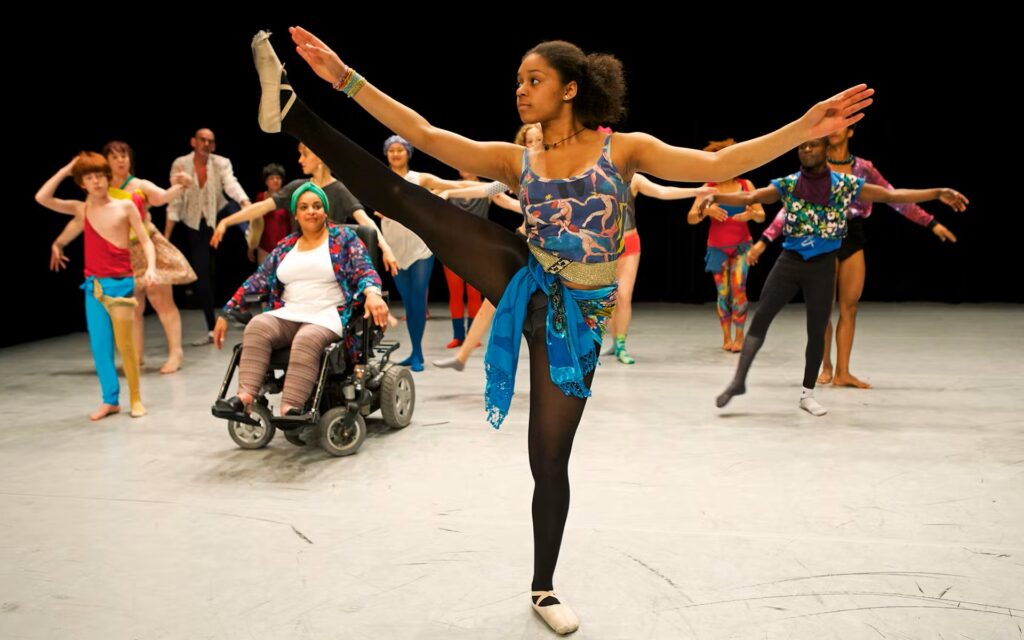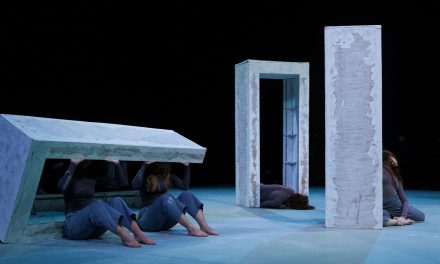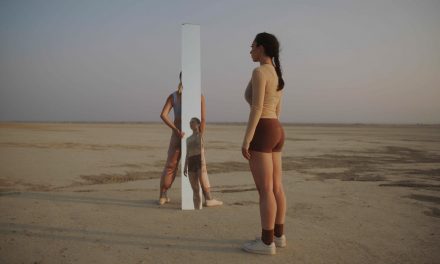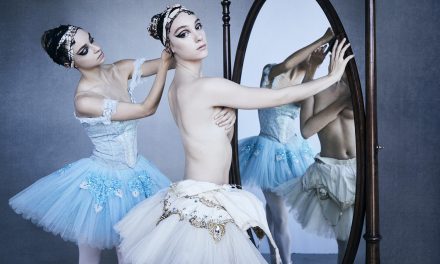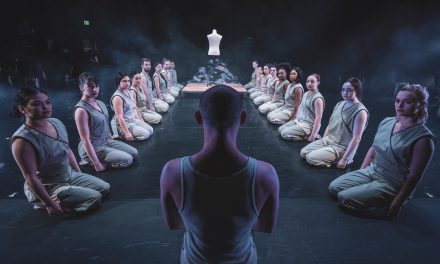This past Thursday night, choreographer Jérôme Bel alongside director Ariel Osterweis, presented “Jérôme Bel” at REDCAT Theater as an “auto-bio-choreo-graphy” of Bel’s past performance pieces. Bel’s work, in lots of ways, can be considered egotistical and almost narcissistic if you are not familiar with his past choreography or ways of making movement. “Jérôme Bel” was probably the best performance and introduction into understanding his performance making concepts, or rather lack of conceptual making at all, which I say as a sincere and true compliment. Bel, over the years, has shifted his craft of performance making, to the individual performer. In breaking down the discourse and thoughts of how dance is and should be, to put it plainly, Bel does whatever he truly wants. In “Jérôme Bel” we get an almost two hour monologue in Bel’s own words about the works he has made, the questions he asked, and the moments he still feels unsatisfied about.
The piece began with performer Brityn Ramsey, in casual jeans and a button down oversized shirt sitting at a desk downstage left. As she opens her computer, she begins to read directly from a manuscript, written from Bel’s point of view, so she can act as a vessel for his absence. Bel no longer travels by plane himself or with his company, to avoid an unnecessary carbon footprint on the world. After hearing about his upbringing, and how he found dance, we begin to hear a shift in his approach to dance and especially to performance. Like most humans in the world, the shift of thought was born out of love, out of loss, and growth from recycling and rebirth all over again.The first excerpt we see of Bel’s is “name given by the author” which first made its premiere in Lisbon, Portugal in 1994. He described that he wanted to title his piece “title” but then looked up the definition of “title” in the dictionary to find the explanation, “name given by the author” and decided to accept that he is in fact the author of his own dance work. It is this, almost innocent, way of connecting point A to point B that makes watching Bel’s work equal parts thrilling as it is frustrating. In the piece, we see two men using everyday objects, like a hair dryer and vacuum cleaner, in ways that they are not meant to be used in order to provoke an emotional response. Not only did watching a snippet of “name given by the author” on the projected screen produce a myriad of responses from the REDCAT audience, but Bel described an audience’s hatred for the piece in 1994 too. From my viewpoint, we had viewers yawning, laughing, fidgeting, and deeply enthralled.
In another excerpt, we see Bel’s “Shirtology” which premiered in Lisbon, Portugal in 1997. In “Shirtology,” we see another video of Bel reading every phrase and/or motion displayed on a t-shirt he wears before removing it to reveal another T-shirt underneath. In the sequence of removing and taking direction, we see an indirect replica of how dancers process choreography, and if the direction stops, there is a moment for a change to occur. At one point we see Bell pointing to every note from Mozart’s Serenade No. 13 in G Major, as it is printed on the shirt; abruptly stopping when the chord ends, and when the print itself ends. For those who want an ethereal escape to the theater, Bel’s work may not be your cup of tea. While works like “shirtology” seem simple, its realism in the dance industry is so visceral, that it emotes a very complicated thought process about what dance is, who dancers are, and how the community at large contributes to the making of the field in the future.
This was never more evident than in his piece “Véronique Doisneau” which premiered at the Paris National Opera in 2004. By far one of my most favorite pieces in his timeline of work, Bel showcased a solo performer named Véronique Doisneau from the Corps de Ballet who spoke about who she was and what she did and did not like about ballet from her own perspective. Bel took a woman who has worked her entire life at dance, and showcased how little dancing a corps de ballet member actually does as a human backdrop on stage. It was at this moment in “Jérôme Bel” that I felt a collective understanding from the REDCAT audience, about what Bel was about, what he was exploring, and the general aesthetic he brought to the art of dance.
For larger interpretations from past works, like “The Show Must Go On” we saw performers, in person, enter the stage and take direction from different pop songs like David Bowie’s “Let’s Dance” where every person began to move however they would like in a semicircle on stage. In listening to the entire 7+ minute song, we only saw the performers move during the chorus, allowing for the spectator and audience to reflect on how they interpret and experience the song themselves. In another moment, we see the dancers arrange themselves onstage while staring at a stagehand who’s back faces the audience. Unable to see his or her expression, the song “Killing Me Softly” by Roberta Flack played over the speaker. During the course of the song, the performers begin to interpret a slow death via movement. On the chorus, we got a new stage of the killing process, as the performers slowly made their way to the floor before eventually remaining seemingly lifeless on the ground.
It is Bel’s humorous and laissez faire approach to movement that makes his work so frustrating and thrilling to absorb. “Jérôme Bel” may in fact be one of the most important works he has made to date. Bel, it seems, is never in the process of creating choreography to be performed, but rather in the process of questioning how movement can access and answer his own inner interrogation on dance itself. While, on the surface, this seems self-absorbent and daring to create a piece about your own movement making pieces, but there is a hilarity to that all the same. “Jérôme Bel” is the performance for performers who know longer know what direction their performance careers are going. By looking back at Bel’s body of work, it is easy to leave the theater knowing none of us have it all figured out, not even him. That sublime realization is a triumph unto itself.
To learn more about Jérôme Bel, please click HERE.
For more information about REDCAT, please visit their website.
Written by Grace Courvoisier for LA Dance Chronicle.
Featured image: Jérôme Bel Gala – Photo by Josefina Tommasi.



